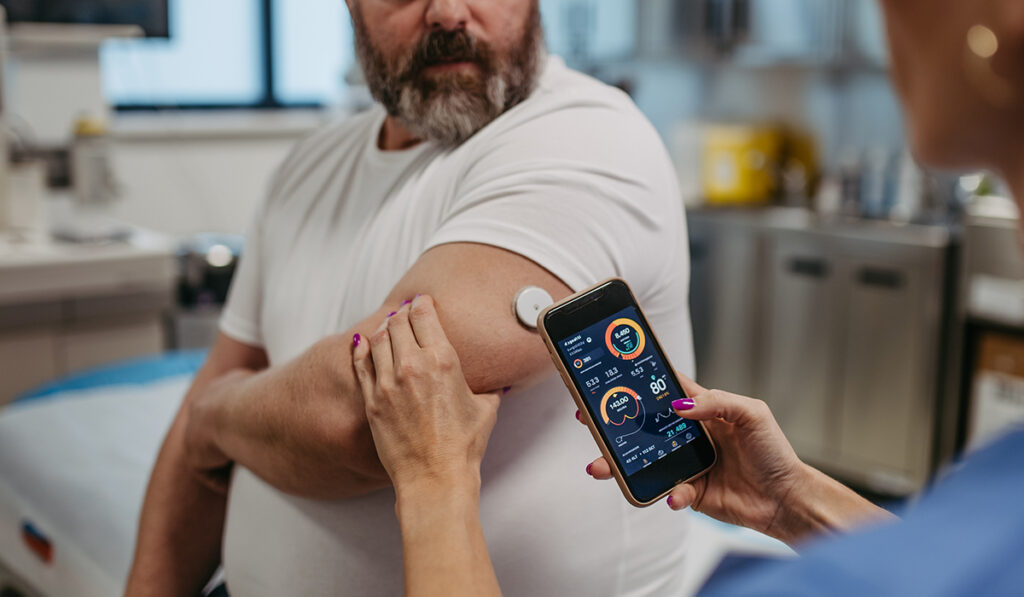Invest in your health now with lifestyle changes and biomarker testing, which could save you cash on health care in the future.
In the United States, health care is expensive. But did you know you can get some health care for free? Some health care expenses are unavoidable. But many chronic diseases, such as Type 2 diabetes, certain forms of cardiovascular disease, and more, are preventable. You can stop these diseases before they start or even reverse some that are already in progress. Lifestyle changes to diet, exercise, sleep quality, stress levels, and more are key.
And some biohacking techniques, like getting certain biomarkers checked, can also be helpful and save you money in the long run. If you don’t know what’s wrong, you can’t fix it. So spending money on testing now and learning about your health status can save you more cash than having to treat an advanced disease state down the road.
Here’s why you may wish to take a preventive approach and engage in “free” or nearly free health care now.
Treating Existing Diseases Is Expensive
About 14 million people in the United States owe more than $1,000 and more than 3 million owe more than $10,000 in medical debt, according to KFF, an independent source for health policy research, polling, and news.
Some chronic conditions are not preventable, such as asthma, chronic migraine, Type 1 diabetes (an autoimmune condition), and more. But other conditions can be prevented.
Type 2 diabetes lends a good example. Before developing Type 2 diabetes a person will develop prediabetes based on various forms of blood glucose (blood sugar) testing.

Keep in mind that a “normal” result isn’t necessarily optimal. In conventional medicine in the United States, doctors consider your blood glucose to be normal if your fasting glucose is below 100 milligrams per deciliter (mg/dL), the threshold for prediabetes. But if your fasting blood glucose is 95, you’re potentially already on a path toward developing prediabetes.
About 40% of adults in the United States have prediabetes based on glucose tests, yet only 1 in 5 of those with the condition have received a diagnosis. Conventional medicine rarely treats prediabetes. So someone whose fasting glucose falls in the normal range generally won’t receive treatment, even if their results aren’t optimal. Instead, conventional medicine generally waits until people are in the Type 2 diabetes range (a fasting glucose level of 126 mg/dL) or higher to treat high blood sugar.
Newer research shows that you can reverse Type 2 diabetes with lifestyle changes. However, reversing this condition is much harder than reversing prediabetes or reversing a normal-but-not-optimal result.
Type 2 diabetes is just one example, but it’s a key one. About 10 percent of adults in the United States have diabetes, and more than 90 percent of people with diabetes have Type 2. On average, people with diabetes incur more than $19,000 in medical expenses annually.
Of course, how much someone is personally on the hook for out of pocket will depend on whether they have health insurance and their plan’s details. However, medical expenses for people with diabetes are nearly three times higher than for those without the condition.
Lower Your Health Care Costs Down The Road By Knowing Your Status
Lifestyle changes can help prevent and reverse many conditions, but you may wish to know your health status now. Here are a few biomarkers to consider. You can request biomarker testing through your primary care doctor or through an independent lab.
Your insurance company may not pay for all tests, and often independent lab tests require an out-of-pocket fee. However, knowing your status now and taking any necessary actions may prevent rising costs down the road.

1. Fasting Insulin
This test checks your insulin level after you’ve fasted for 8 to 12 hours. Fasting insulin may be a better biomarker test than glucose tests for learning about your prediabetes and Type 2 diabetes risk. That’s because insulin resistance can show up in the form of a rising insulin level, well before your blood sugar level becomes more elevated.
We don’t have a scientific consensus on optimal insulin levels and it’s not a test doctors order for routine blood work of the average person. However, while a “normal” level is < 25 microunits per milliliter, research indicates that optimal fasting insulin should be <8 μU/L for males and <10 μU/L for females.
2. Hemoglobin A1c (HbA1c or A1C)
This test shows your average blood sugar over the past two to three months shown as a percentage. Your A1C is normal if it’s 5.6% or less. You have prediabetes if your A1C is 5.7% to 6.4%, and Type 2 diabetes if it’s 6.5% or higher. However, research shows that even A1C levels in the normal range have links to a higher risk of progressing to Type 2 diabetes. For this reason, experts recommend aiming for an A1C of <5.0%.
3. Apolipoprotein B (ApoB)
ApoB is a cholesterol test. If you get regular checkups with your primary care physician, they’ve likely tested your cholesterol and triglyceride levels via a lipid panel. However, these tests don’t measure the direct number of problematic cholesterol particles.
ApoB may be a more accurate predicter your cardiovascular disease risk, but doctors do not routinely encourage this test. This test lacks a clear consensus on concerning and optimal ranges. However, having an ApoB level of 130 mg/dL or more increases your risk for atherosclerosis (clogged arteries). If you already have an increased risk for cardiovascular disease, you may wish to aim for an even lower number, such as under 100 mg/dL or even under 80 mg/dL.
4. Inflammatory Markers
A high-sensitivity C-reactive protein (hsCRP) test measures your levels of CRP. Your liver produces CRP in response to injury, infection, and inflammation. If you are recovering from the flu or another infection or have an injury, such as a sprained ankle, a higher CRP level is to be expected and signals that your immune system is doing its job.
However, if you have a high CRP level outside of these instances, you might be experiencing chronic inflammation. Physicians use the CRP biomarker in conjunction with other tests to diagnose and monitor some conditions. But you may also wish to know your CRP level to see if you have chronic inflammation, which is associated with cardiovascular issues, Type 2 diabetes, more.
A CRP level of 1.0 mg/L or less indicates a lower risk of cardiovascular disease. However, a more optimal result is 0.5 mg/L or less.
Lifestyle Changes To Make Now For Cheaper Health Care In The Future
The following lifestyle changes can help you prevent disease or even reverse some disease processes if you find that one of your biomarkers is out of the normal or optimal range. Ultimately, these lifestyle changes can benefit just about everyone.

Optimize Your Nutrition
- Reduce or eliminate ultra-processed foods. Foods like processed meats, snacks, and soft drinks are high in sodium, unhealthy fats, and added sugar, all of which can contribute to worsened health.
- Up your fruits and veggies intake. High-fiber foods, such as these, help you feel full and satisfied, feed the gut microbiome, and lower inflammation, reducing your risk for several chronic diseases.
- Boost your protein consumption. Protein can help you feel more satisfied and slow the absorption of glucose into the bloodstream, which can reduce the chance for blood sugar spikes that contribute to the development of prediabetes and Type 2 diabetes. Protein also supports muscle, which we lose as we age unless we do something about it. Yet muscle is so important for health in the long run.

Optimize Physical Activity
- Get your cardio on. Aerobic exercise gets your heart rate up and improves your endurance. Choose activities you enjoy so that you stick with them, and aim for 150 minutes of moderate intensity exercise per week.
- Build strength training into your workouts. Increasing muscle mass improves insulin sensitivity, which is important for preventing Type 2 diabetes and cardiovascular disease. Muscle also helps prevent injury. Aim for at least two strength-training sessions per week, using either weights or doing bodyweight exercises, such as pushups.
- Work on balance, stability, flexibility, and mobility. Balance is your ability to maintain your center of gravity. Stability is your ability to control joint movement. Flexibility refers to your muscles’ ability to passively stretch. While mobility refers to how your joints move through their normal range of motion. Balance, stability, flexibility, and mobility all help prevent costly injuries and help you maintain your independence as you age.

Optimize Your Sleep & Stress Management
- Aim for adequate quality sleep. Poor sleep can make you more insulin-resistant the next day. Sleep also helps regulate cortisol, the “stress hormone.” Although we need cortisol for daily function, too much can contribute to disease development.
- Find ways to relieve stress. Chronic stress increases cortisol. Techniques such as meditation, journaling, engaging in your hobbies, and spending quality time with loved ones may be effective tools for managing stress.
Bottom Line
Anyone who’s ever received a medical bill in the United States knows that health care can give you sticker shock. Although we can’t prevent every condition under the sun, we can take steps to reduce our risk for preventable diseases.
Taking action now and knowing your health status can help you save money rather than having to fork over your hard-earned cash for costly care related to preventable diseases in the future.
About The Author: Jennifer Chesak, MSJ
Jennifer Chesak is an award-winning author, science and medical journalist, editor, and fact-checker, and her work has appeared in several national and international publications, including the Washington Post and BBC. Recently her debut nonfiction book on women’s health was awarded the IBPA Benjamin Franklin silver medal. Chesak earned her master of science in journalism from Northwestern University’s Medill. She currently teaches in the journalism and publishing programs at Belmont University, leads various workshops at the literary nonprofit The Porch, and serves as the managing editor for the literary magazine SHIFT. Find her work at jenniferchesak.com and follow her on socials @jenchesak.






